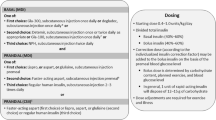Abstract
Purpose
This phase I study was performed in volunteers of Japanese ethnicity to compare pharmacokinetic data after infusion of 6 % hydroxyethyl starch (HES) 130/0.4 with historical data of Caucasians.
Methods
In an open-label, uncontrolled, single-center study, 12 healthy male Japanese volunteers received single intravenous infusions of 500 ml 6 % HES 130/0.4 (Voluven 6 %; Fresenius Kabi Deutschland, Bad Homburg, Germany) over 30 min.
Results
Plasma concentration of 6 % HES 130/0.4 was highest at end of infusion (5.53 ± 0.55 mg/ml) and decreased following a biphasic manner. Total plasma clearance and rapid and slow elimination half-lives obtained by a two-compartment model were 1.14 ± 0.16 l/h, 1.12 ± 0.26 h, and 9.98 ± 2.38 h, respectively, and the volume of distribution was 4.76 ± 0.64 l. Mean area under the concentration–time curve was 26.7 ± 3.75 mg/ml h. The total amount of HES excreted into urine was 59.4 % of the applied dose. Hemodilution was observed in all 12 subjects as indicated by a decrease of hemoglobin from 15.5 ± 0.4 g/dl at baseline to 13.8 ± 0.4 g/dl after the end of infusion. Adverse events in this study refer to changes of laboratory parameters and were assessed as not clinically relevant.
Conclusion
Single administration of a 500 ml solution of 6 % HES 130/0.4 was confirmed to be safe and tolerable in healthy male Japanese subjects. A rapid renal excretion was observed within 24 h after drug administration, accounting for 96 % of the total amount excreted. A comparison with pharmacokinetic data derived from Caucasians did not reveal significant differences to Japanese and confirmed the good tolerability in both ethnic groups.




Similar content being viewed by others
References
Jungheinrich C, Neff TA. Pharmacokinetics of hydroxyethyl starch. Clin Pharmacokinet. 2005;44:681–99.
Standl T, Burmeister MA, Schroeder F, Currlin E, Schulte am Esch J, Freitag M. Hydroxyethyl starch (HES) 130/0.4 provides larger and faster increases in tissue oxygen tension in comparison with prehemodilution values than HES 70/0.5 or HES 200/0.5 in volunteers undergoing acute normovolemic hemodilution. Anesth Analg. 2003;96:936–43.
Waitzinger J, Bepperling F, Pabst G, Opitz J. Hydroxyethyl starch (HES) [130/0.4], a new HES specification: pharmacokinetics and safety after multiple infusions of 10% solution in healthy volunteers. Drugs R D. 2003;4:149–57.
Langeron O, Doelberg M, Ang ET, Bonnet F, Capdevila X, Coriat P. Voluven, a lower substituted novel hydroxyethyl starch (HES 130/0.4), causes fewer effects on coagulation in major orthopedic surgery than HES 200/0.5. Anesth Analg. 2001;92:855–62.
Gandhi SD, Weiskopf RB, Jungheinrich C, Koorn R, Miller D, Shangraw RE, Prough DS, Baus D, Bepperling F, Warltier DC. Volume replacement therapy during major orthopedic surgery using Voluven (hydroxyethyl starch 130/0.4) or hetastarch. Anesthesiology. 2007;106:1120–7.
Jungheinrich C, Sauermann W, Bepperling F, Vogt NH. Volume efficacy and reduced influence on measures of coagulation using hydroxyethyl starch 130/0.4 (6%) with an optimised in vivo molecular weight in orthopaedic surgery: a randomised, double-blind study. Drugs R D. 2004;5:1–9.
Ickx BE, Bepperling F, Melot C, Schulman C, Van der Linden PJ. Plasma substitution effects of a new hydroxyethyl starch HES 130/0.4 compared with HES 200/0.5 during and after extended acute normovolaemic haemodilution. Br J Anaesth. 2003;91:196–202.
Waitzinger J, Bepperling F, Pabst G, Opitz J, Muller M, Francois Baron J. Pharmacokinetics and tolerability of a new hydroxyethyl starch (HES) specification [HES (130/0.4)] after single-dose infusion of 6% or 10% solutions in healthy volunteers. Clin Drug Invest. 1998;16:151–60.
Jungheinrich C, Scharpf R, Wargenau M, Bepperling F, Baron JF. The pharmacokinetics and tolerability of an intravenous infusion of the new hydroxyethyl starch 130/0.4 (6%, 500 mL) in mild-to-severe renal impairment. Anesth Analg. 2002;95:544–51.
Kohler H, Kirch W, Horstmann HJ. Hydroxyethyl starch-induced macroamylasemia. Int J Clin Pharmacol Biopharm. 1977;15:428–31.
Mishler JM, Durr GH. Macroamylasemia induced by hydroxyethyl starch: confirmation by gel filtration analysis of serum and urine. Am J Clin Pathol. 1980;74:387–91.
Acknowledgments
We thank Dr. Fukase/Kouryokai CPC Clinic Kagoshima for conducting the clinical study.
Conflict of interest
Voluven® is a product of Fresenius Kabi. Dr. Bepperling is an employee of this company, and Dr. Miyao is a Medical Consultant to this company.
Author information
Authors and Affiliations
Corresponding author
About this article
Cite this article
Yamakage, M., Bepperling, F., Wargenau, M. et al. Pharmacokinetics and safety of 6 % hydroxyethyl starch 130/0.4 in healthy male volunteers of Japanese ethnicity after single infusion of 500 ml solution. J Anesth 26, 851–857 (2012). https://doi.org/10.1007/s00540-012-1430-6
Received:
Accepted:
Published:
Issue Date:
DOI: https://doi.org/10.1007/s00540-012-1430-6




